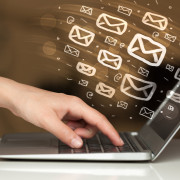Email MADNESS!! Misusing and abusing email –and what you can do to stop this
Knowing how to use email is simply assumed
Did you know that the majority of email traffic comes from the business world, with business users sending and receiving an average of 121 emails a day in 2014? Email is the most pervasive form of communication in the business world, and therefore effective email writing means effective business communication. But surprisingly (or perhaps not) email doesn’t always mean effective communication, does it?
One of the more interesting aspects of being a trainer is the opportunity to meet, talk with and learn from other professionals in a wide range of jobs and industries. The following is a true story. I’ve changed names to protect the innocent – and the guilty. Sadly though, I’m guessing that as you read this you’ll have your own stories of email madness spring to mind.
The use, misuse and abuse of email communication (yes, this is a true story)
I met Sven in an open seminar. Sven was the manager of the facilities management department at a large manufacturing company. His administrative location had just moved premises, and as you can imagine this was an incredibly busy time for Sven and his team. However even though (or perhaps because) Sven was busy he was determined to attend the time management seminar his HR department had organized with us. Sven set his out of office reply up the night before, and I met him on a cloudy morning the next day. The training went very well as the group shared, discussed and developed practical solutions to the problems they faced. Then at lunch time the following emerged …
Somebody (let’s call him Michael) had sent Sven a mail and received Sven’s out of office reply. Sven had not changed his automatic signature block and Michael knew that Sven had moved offices, so why did his signature block still have the old address? Michael concluded that this could well be an IT problem, but as he wasn’t sure he sent a mail to his 12 teammates asking if they had experienced something similar. Of these 12 teammates, one sent a mail to the IT help desk, one of them sent a mail to his line manager (let’s call her Marie) … and one of them sent a mail to Sven’s colleague, who then sent a mail to Sven.
Marie sent a mail titled “URGENT – critical email problem” to the CFO. The CFO, who was in a meeting, saw the title and sent a mail to the Head of IT asking what the problem was and how quickly it could be resolved. The Head of IT sent a mail to the IT help desk asking what the problem was and how long it would take to be resolved. … and I think you can imagine the rest yourself. At some point during lunch time somebody from the IT help desk phoned Sven to ask whether he knew his signature block was old. At this point Sven explained it was his oversight – and that he’d update it when he got back into the office the next day.
Key learning points that all email users should keep in mind
Now obviously the above is not strictly speaking about just an email problem. But the elements of the story do highlight some all-too-frequent behaviours. Here are 4 key learning points which, if they’d been followed would have prevented the situation above:
Just because you can send an email it doesn’t mean you have to!
It is possible to over communicate sometimes. How many emails do you receive each day? One of the biggest sources of stress at work is the sheer volume of emails that people receive. So, before you even begin writing an email, always take a few seconds and ask yourself: Is this really necessary? Then ask yourself the same question again before you hit “send”.
Know when to use cc , and when not
Discuss this with your colleagues and agree on a “code of conduct”. Keep in mind that people can interpret what “cc” means in different ways. They can also read meaning into who was and was not copied in.
Think carefully about the subject lines in email
In particular think about how often you want to use words such as URGENT, NEED HELP, PRIORITY etc. If you use them too often in your subject lines, you should be prepared that when you really need to draw attention to your email, your reader won’t be interested.
Know when to pick up the phone
Email is not always the most effective form of communication. Sometimes, picking up the phone is faster. Email is great for giving information, sharing updates or making simple requests. However use the phone if something could be a sensitive or emotional topic, or if you need to deal with questions that are likely to need some back-and-forth discussion.
Your email madness
As I was preparing this post, everyone I spoke to about it had their own email madness story to share. You can use the comments function below to share your example of email madness with our readers.







